The latest research results of the Qinling Museum are announced!
Author:The official account of Xi'an Time:2022.07.21

The style and characteristics of the pottery figurines unearthed by the Emperor Qin Shi Mausoleum K9901 are completely different from the Terracotta Warriors and Horses of the Qin. From the analysis of the expression, image, action and other factors of the completion of the pottery figurines. Fire figurines. The figurine 4 and 28 figurines that were restored this year were temporarily named "bubble figurines" and "lying figurines", which has attracted much attention from social attention. On July 20, the Emperor Qin Shi Mausoleum announced the latest research results of these two hundred drama figments.

K9901 Funeral pit unearthed from a hundred opera figurines
The K9901 funeral pit is located in the southeast of the Emperor Qin Shi Emperor's Tombs, between the inside and outside the city wall, about 300 meters from the Qin Shihuang Mausoleum. Pit, the total area is about 800 square meters.
In 1999, the Archaeological Team of the Terracotta Warriors and Horse Museums of the Shaanxi Provincial Institute of Archeology and Qin Shihuang conducted the first rescue test excavation. From 2011 to 2013, in order to cooperate with the construction of the K9901 Funeral Pit Exhibition Hall of the Emperor Qin Shi's Mausoleum Museum, with the approval of the State Administration of Cultural Heritage, the overall archeological excavation of the K9901 funeral pit was performed. Two excavations have unearthed more than 30 pottery figurines, identifying the nature, connotation and architectural structure of the funeral pit, and scientifically protect the unearthed relics and relics.
From the perspective of the restored K9901 funeral pit unearthed pottery figurines, they have unique shapes, and their styles and characteristics are very different from the Terracotta Warriors of the Qin Terracotta. According to the preliminary judgment of factors such as the expression, image, and action of these figurines. The hundreds of therself of the Qin Dynasty court entertainment activities.
"Hundred Opera" is the general saying of ancient music and dance acrobatics. As early as the Spring and Autumn and Warring States Period, this kind of competitive acrobatics project has gradually formed. By the Qin Dynasty, the Hundred Opera has appeared on the court of the court, becoming the main way of the Qin court entertainment. one. When shaping these pottery figurines, the Qin Dynasty craftsmen made full use of the techniques of plastic, pile, pinching, paste, engraving, painting, etc. Personal characteristics and mental appearance are highlighted. At the same time, a variety of sculpture techniques and painting technology are used, and the overall level of pottery figurines is rich and the image is clear.
The relevant person in charge of the Emperor Qin Shi Mausoleum Museum said that the excavation of the 100 drama figurines revealed the new category of the Qin Dynasty pottery figurines and vividly restored the colorful life of the Qin Dynasty, so that we can understand and understand the court entertainment of the Qin Dynasty from a new perspective. Culture shows the unique charm of Chinese civilization.
Successful restoration of "Bubble Nail Fignes" clothing
The upper body of the 4th figurines unearthed from the K9901 has a circular bubble nail similar to the palace gate of the palace during the Ming and Qing dynasties, so it is temporarily called the "bubble figurine". Among the excavated Qin Dynasty pottery figurines, No. 4 figurines are a fine art product that retains more artistic information of the Qin Dynasty. It stands standing in a standing posture, with a height of 1.57m (excluding the head), the legs are separated, slightly bowed, and the body twists slightly to the side. The pottery figurines are covered with clothes, covered with bubbles, and the nails are decorated with octagonal patterns of the sun; The whole pottery figurines are painted, and the status of residual painting is the best one of the 100 drama warriors.
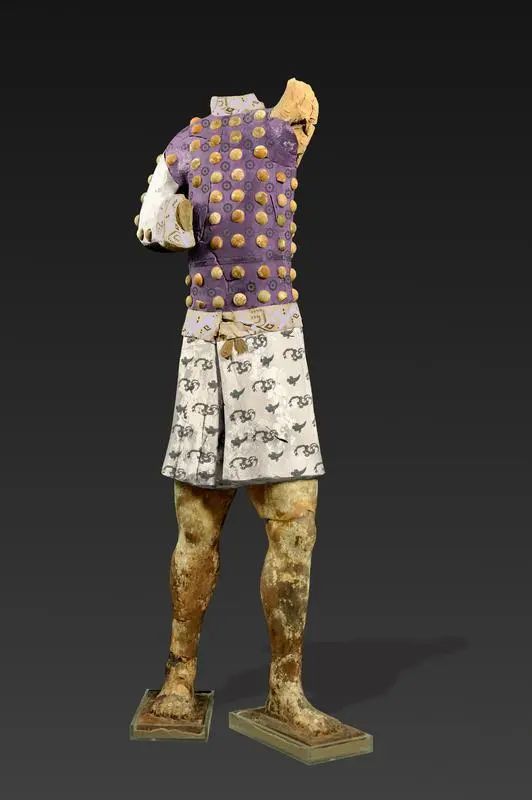
According to reports, the "Bubble Nail Fignes" residual painted patterns concentrated on tops, collar edges, sleeve margins, and pants belts. There are three main patterns: octagonal star patterns, geometric patterns and cloud gas patterns. The top is black octagonal star pattern, with yellow beaded decoration in the middle. The collar edge, sleeve margin and belt are geometric decorations, and there are "grass leaf patterns". At present, the colors that can be observed are white, black, yellow, and purple.
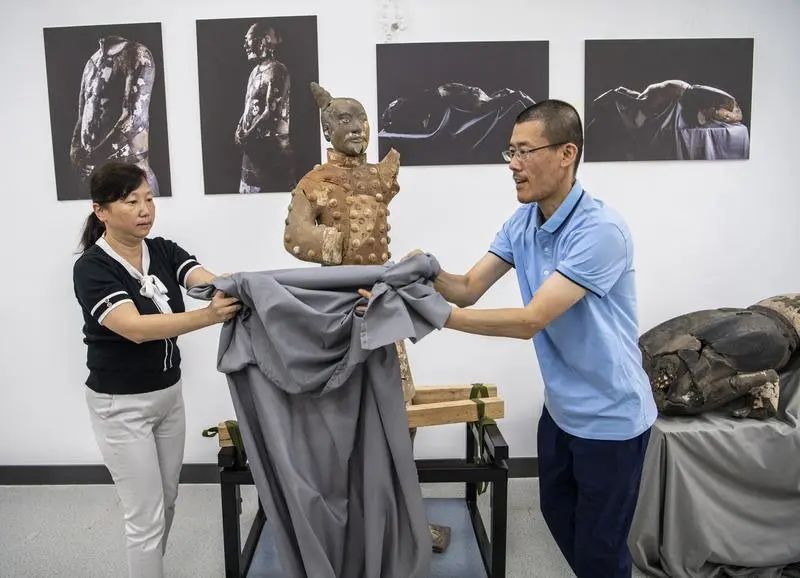

In order to restore the original appearance of the "bubble nail figurines", the Qinling Museum and the China Silk Museum carried out the textile recovery of No. 4 hundred opera figurines. According to relevant literature and archeological objects, the Qin and Han dynasties were generally weaved with exquisite fabrics. For silk, there are no cotton in the Central Plains, and wemp fabrics are rarely woven. At the same time, the particularity of the 100 -opera figurine performance is considered, and the possibility of analysis is the most likely. Therefore, it is speculated that the main body of the jacket is a silk brocade with octagonal star patterns, so it is recovered by the weaving method of the flower; Silk -ground embroidery cloud gas patterns are used as embroidered land to restore the embroidery needle. In this way, it shows the basic original appearance of the No. 4 hundred opera figurines in clothing.

The main body of the top is the brocade with the octagonal star pattern
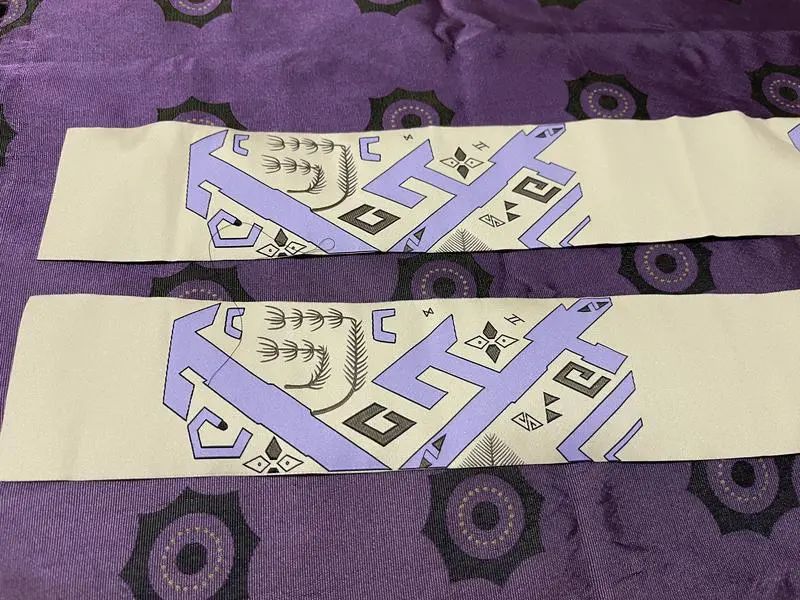
Silk weaving fabrics with geometric patterns of collars, sleeves and belts
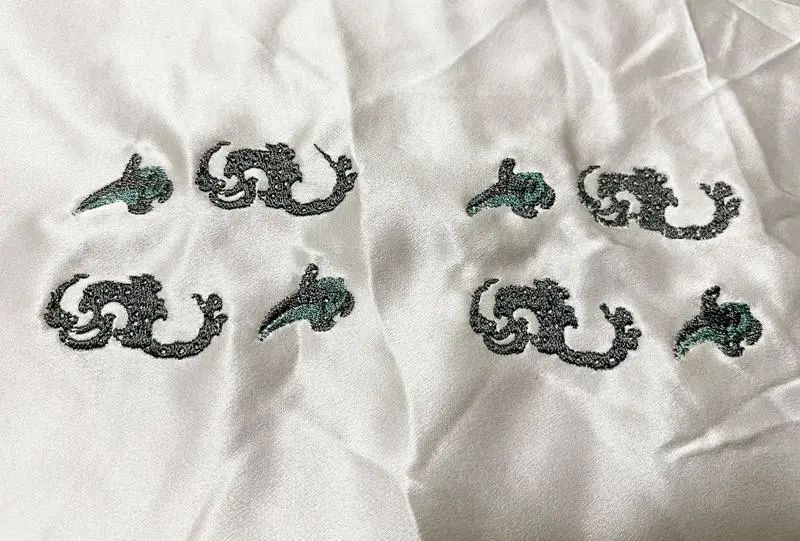
The pants are the cloud -embroidered cloud pattern
Nine months of restoration of figurines 28
The Tao figurines on the 28th were found at the eastern end of the third hole of the K9901 funeral pit. The break was very serious during excavation. It consists of 72 pieces and 12 bags of residues. The head and hands were missing. After preliminary pairing of the unearthed pottery films, it was found that it was different from the pottery figurines unearthed in the past. "".
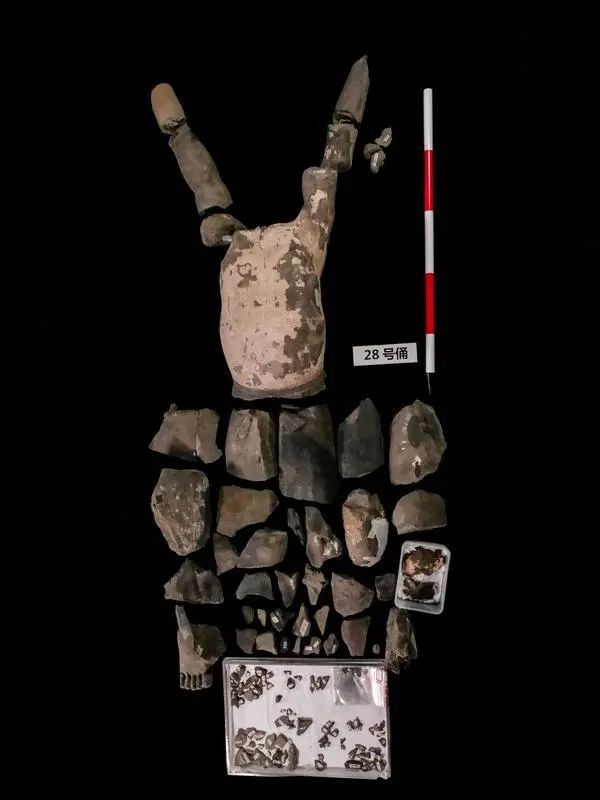
The protection and restoration of this pottery figurine is also difficult to work. The first step of repairing work is to make a bracket based on the form of pottery figurines, measure the key support point, and make the production and accurately adjust the bracket at the repair site. Cultural security officers said that the upper body of the "lying figurine" was basically complete, and the lower body was more broken. First, the small pieces of small pots in the lower body were paired, and then the upper body was paired. The epoxy resin of the pottery figurines is used, while the complementary materials are used for mixed materials for epoxy glue and brick powder. The color is the closest color of the pottery figurines. Because the upper body of the figurines has a crack that runs through the lower side of the chest, the completion material is used for reinforcement from the inner wall, and the area where the gap cannot be irrigated can be reinforced with gauze and glue in the inside of the pottery figurines. After basically completing the repair work, in order to ensure that the figurines on the 28th figurine do not play a role in supporting the fragile parts such as both feet, the restoration staff raised the lower side support point of the pottery figurines to make the feet not force, but it also guarantees that the pottery figurines are guaranteed The overall posture is unchanged. After nine months, the final figurines of the 28th figurines were 154 cm long and weighing 101.4 kg.
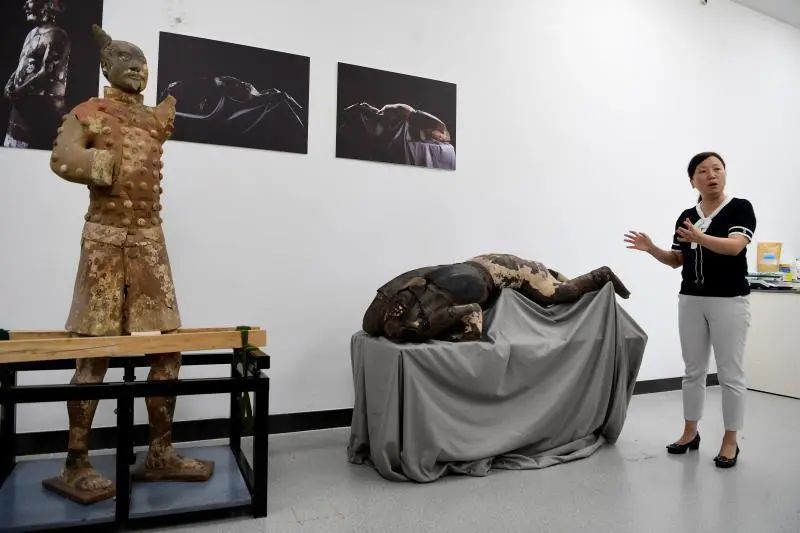
Due to the special attitude of the 28th figurines, it is difficult to directly use the cultural relics itself to study and display and utilize it even after repair. To this end, the Qinling Museum and the School of Information Science and Technology of Northwest University conducted a three -dimensional scanning model of the "lying figurines", using high -precision surface three -dimensional scanning and texture photography techniques to build high -precision modeling of cultural relics and geometric forms to make the surface and geometric forms so as to make the surface and geometric forms to make the surface and geometric forms to make the surface and geometric forms to make the surface and geometric forms to make the surface and geometric forms to make the surface and geometric forms to make the surface and geometric forms to make the surface and geometric forms to make the surface and geometric forms to make the surface and geometric forms so as Researchers and the public can observe the attitude and details of the 28th figurines by browsing the three -dimensional model.

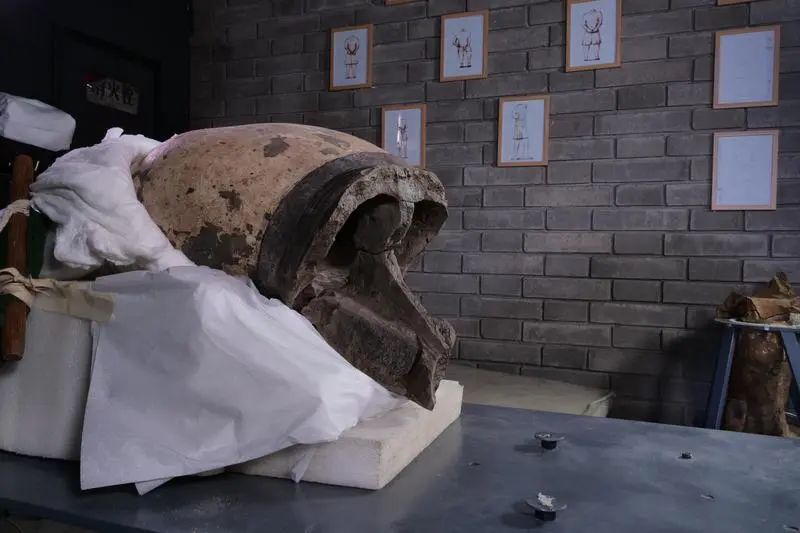
Acrobatic actors reproduce the Qin Dynasty Baicai
It is worth mentioning that during the implementation of the "lying figurine" surface painting protection, the researchers found three continuous fingerprint marks on the abdomen of the pottery figurines. The size of the residue handprint is about 3.8cm. The overall pattern response is relatively complete, the lines are clear and coherent, but the contrast is not great.
After the fingerprint experts from professional institutions conduct data collection and characteristics of three fingerprints, after using fingerprint statistical analysis technologies to systematically judge the three fingerprints, they find that these three fingerprints are similar to the characteristics of the adolescent fingerprints. The craftsman of the fingerprints on this pottery figurine should be teenagers.
After the "appearance of nail figurines" and "supine figurines", the successive "appearance" has also attracted a strong interest in people in the Qin Dynasty.
In order to restore the performance of the Qin Dynasty's 100 opera performances, the Qinling Museum specially invited professional actors of the Shaanxi Acidistic Art Troupe to study and imitate the movement and posture of the Top 100 drama 28, and arranged acrobatic programs. On June 11 this year, the main venue of the Qinling Museum of "Cultural and Natural Heritage Day" of Shaanxi Province, acrobatics performed wonderful performances, allowing the palace hundreds of courts more than 2,000 years ago to show them in front of everyone.
"While doing a good job of scientific and technological protection and restoration of the 4th figurines and No. 28 figurines unearthed from Qinling K9901, the Qinling Museum actively actively the United Nations domestic scientific research institutions and professional groups, carried out the collection of cultural relics information, analyzed, utilized, and activated work. The recovery of the figurines and the processing of modern textiles show the exquisite costume art of Qin Dynasty two thousand years ago; through the analysis of the fingerprints of the Qin people, the public can understand the identity information of the Qin Dynasty craftsman; Arrange modern acrobatics. "The relevant person in charge of Emperor Qin Shi's Mausoleum Museum said that these tasks have made the research and protection of cultural relics closer to contemporary life, so that the colorful life of the Qin people more than 2,000 years ago could meet us through time and space.
Text: Xi'an Newspaper All Media Reporter Pang Le
Picture: Li Ming, a reporter from Xi'an Newspaper, Li Ming
Edit: Amber | Review: Siyuan
- END -
The artist of the military land walked into Daban City, Urumqi City.
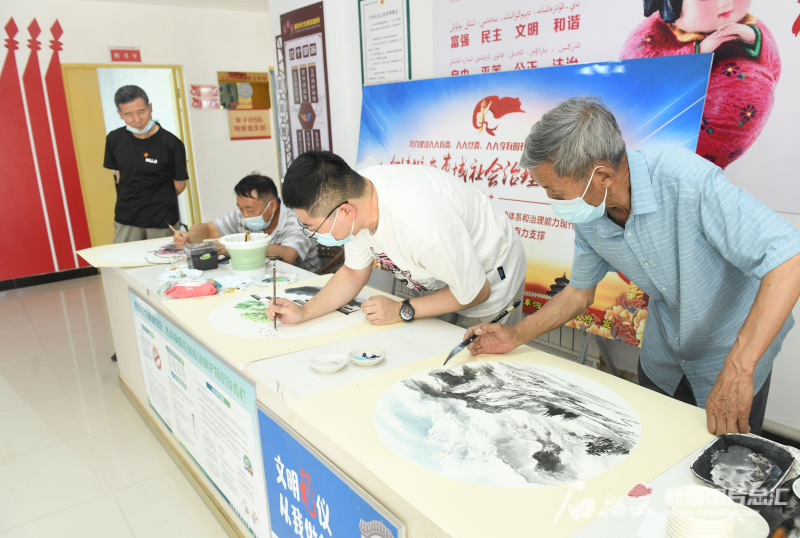
On June 30, at the New Era of Donggou Township, Daban City, the artists splashed i...
Iranian Foreign Minister: Iran's economic interests must be guaranteed in the restoration of performance negotiations
Xinhua News Agency, Tehran, July 1st (Reporter Gao Wencheng) Iranian Foreign Minister Abdullahiyan said on the 1st that the success of restoring the negotiation of the comprehensive agreement of the I